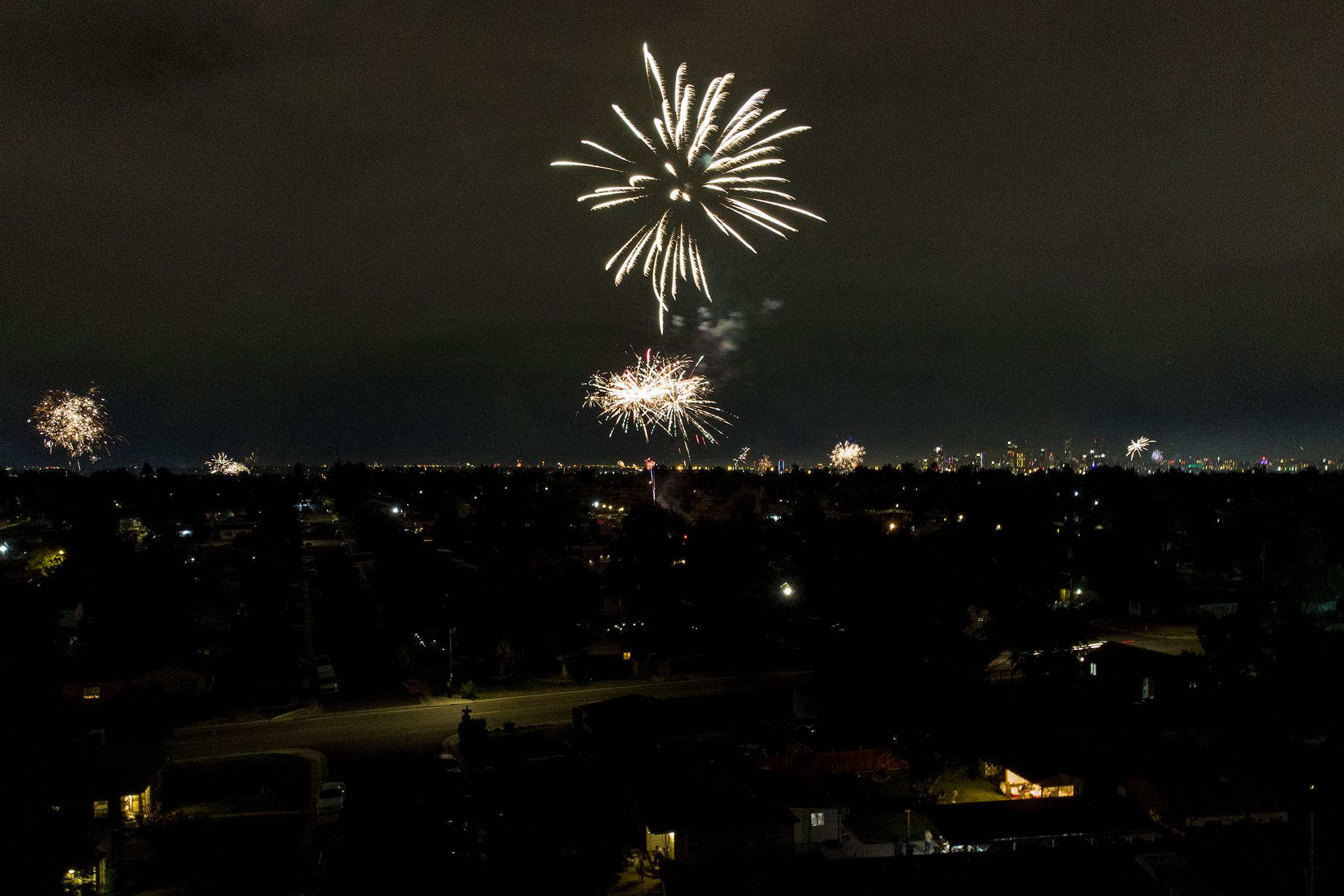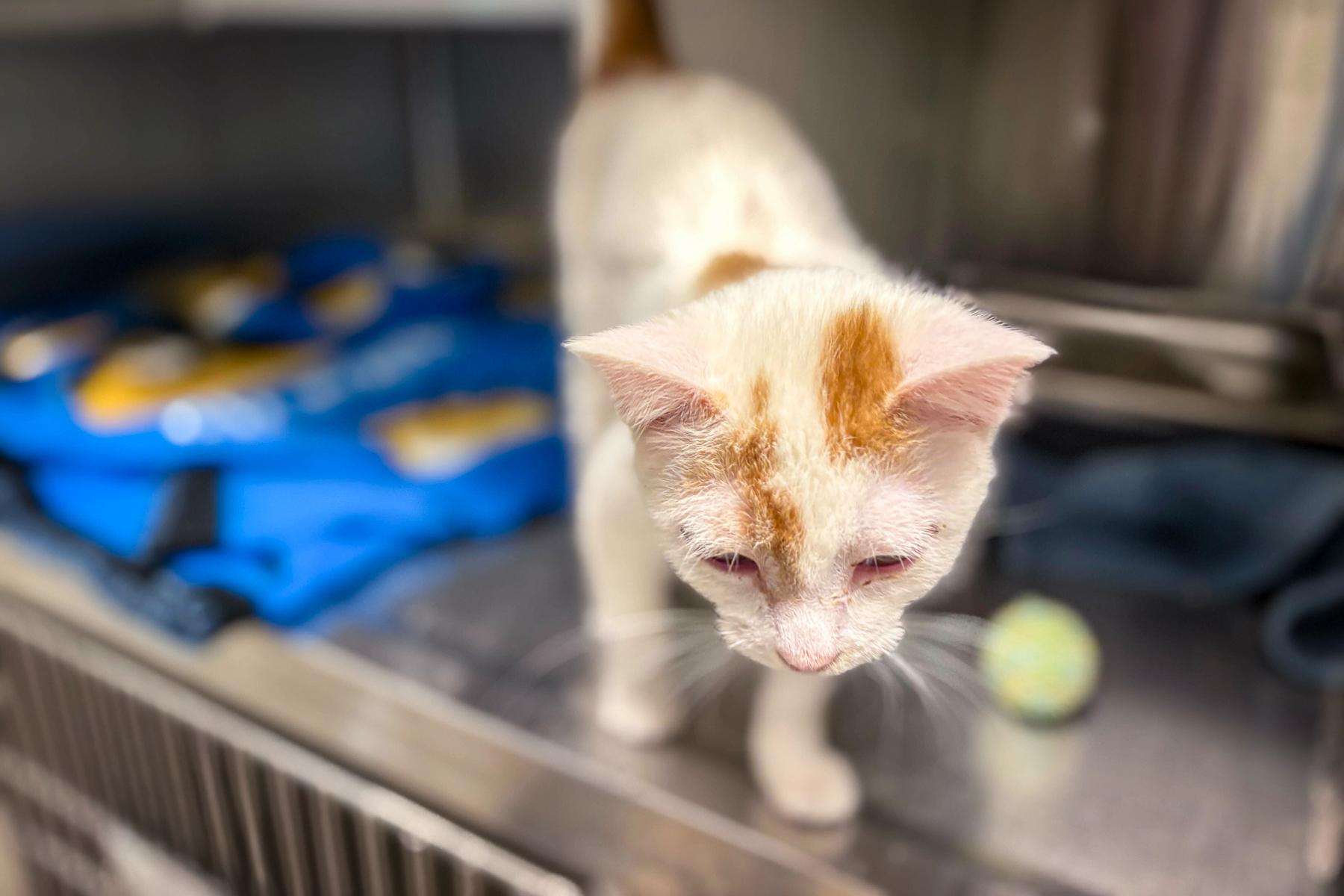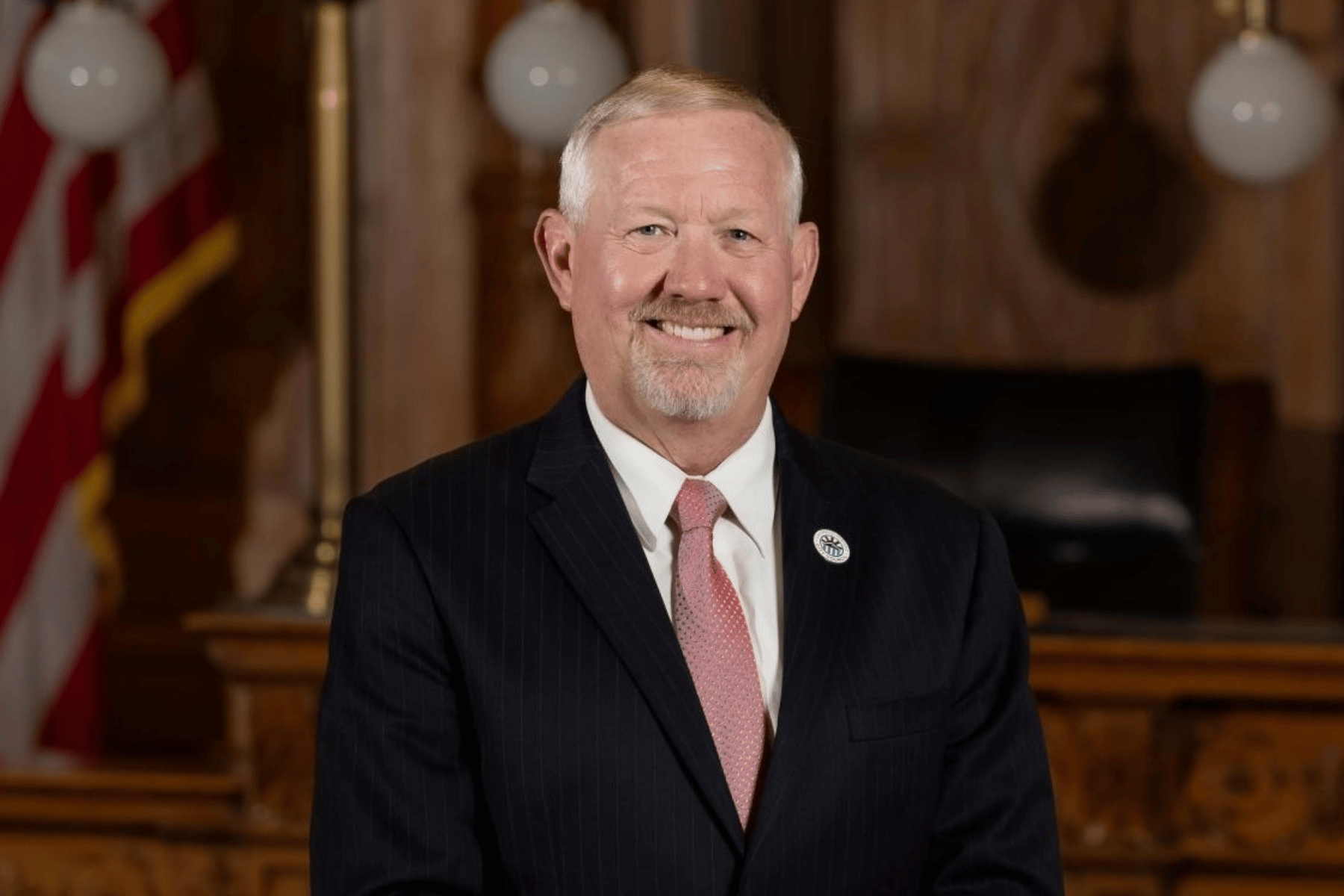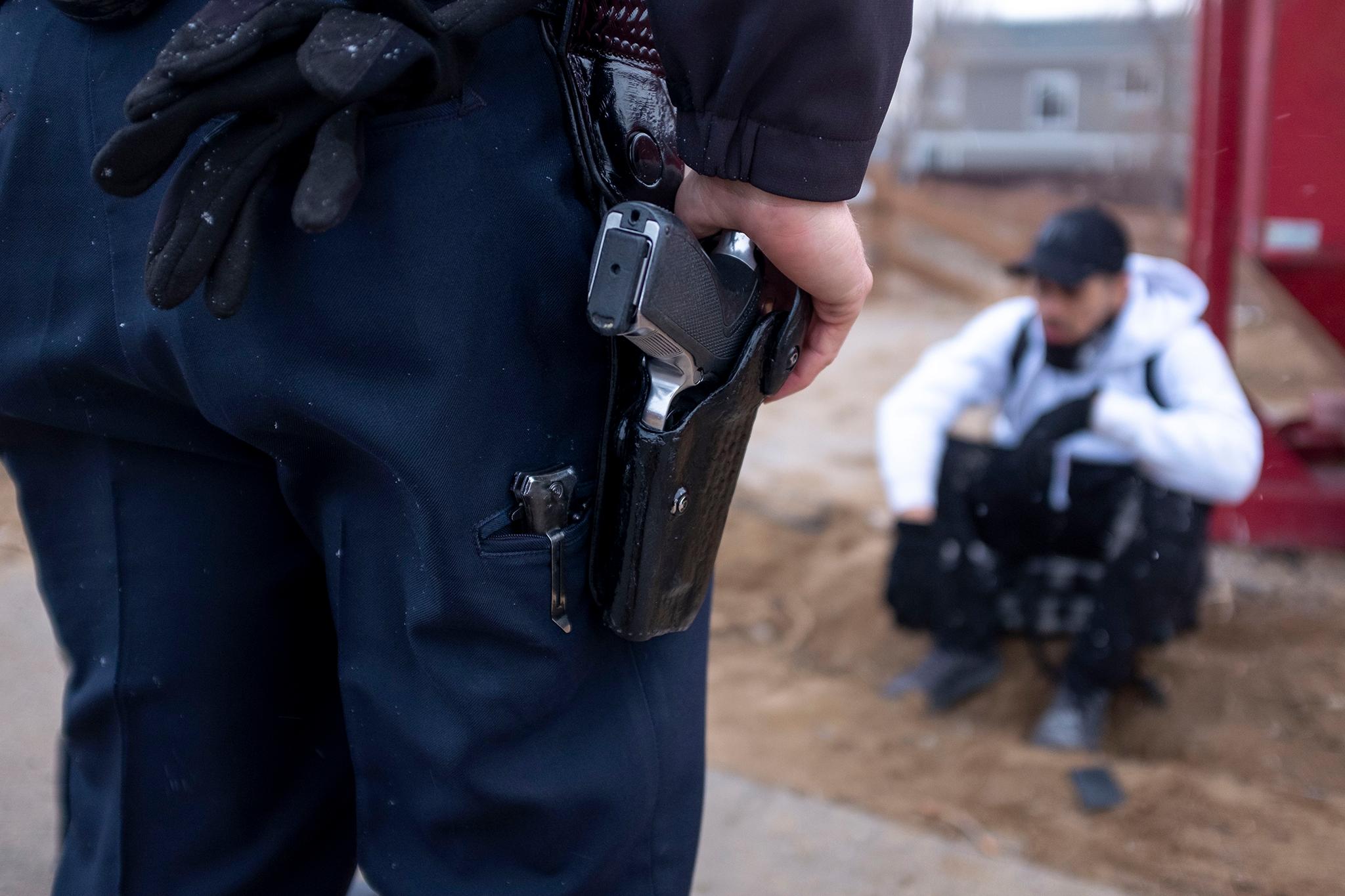
Colorado law enforcement authorities shot someone, on average, once a week for the past six years.
The 189 people who were killed by law enforcement officers between the start of 2014 and the end of 2019 gave Colorado the nation’s 5th highest rate for fatal law enforcement shootings. The number of annual fatal shootings by law enforcement in the state almost doubled between 2014 and 2018.
“It's rather embarrassing, actually, to hear this,” said State Sen. John Cooke of Weld County, who passed a bill in 2015 to boost transparency around shooting investigations. “Until we put all the bad guys away, it's always going to be a problem.”
Most of those shot were white, male, high on drugs — often methamphetamine — or alcohol and carrying a weapon. In many cases, the families they left behind blame police for failing to find an alternative to deadly force. But as armed assaults on police have risen, suspects often leave them with little choice.
In all but two of the 309 cases in six years, officers’ actions were legally justified by district attorneys or grand juries.
- Meth, Guns And Aggressive Tactics Are A Deadly Mix That Drives Police Shootings In Colorado
- Calls For Training, More Transparency Follow Investigation
- Explore Our Shooting Database By Law Enforcement Agency
- Meth Makes Suspects Harder To Non-Lethally Take Down, So Many End Up Dead In Colorado
- When Police Make The Decision To Shoot: 'You Can’t Even Imagine How Horrifying It Can Be'
- There's No Simple Solution, But Efforts To Reduce Shootings Can Clearly Save Lives
- Northglenn Agrees To Nearly $9M Settlement In 2017 Officer Shooting
- Keep Track Of 2020's Police Shootings
Using case reviews conducted by prosecutors, autopsy and police reports and dozens of interviews, Colorado Public Radio has created and analyzed a database of information from every shooting in which a suspect was injured or killed in the past six years.
CPR’s database offers insight into trends that surprised people throughout the criminal justice system.
Though state officials make an effort to collect some information on cop shootings, dozens of agencies do not participate. The state data also lacks integral pieces of information about shooting rates in departments, what drugs people were on and how the shootings were legally justified by prosecutors. This means police chiefs, sheriffs, district attorneys and even criminal defense attorneys aren’t aware of Colorado’s trends.
“This painful and important story … touches on so many challenges of the criminal justice system,” said Colorado Attorney General Phil Weiser. “I would have wanted us not to be at the top of this (national rankings) list. This is not a list that makes anyone feel good.”
CPR’s data starkly captures the resurgence of methamphetamine use throughout the state. Its presence, accompanied by the possession of weapons, is a part of nearly half of the deadly interactions with police during the period examined.
The case reviews also clearly reveal the extraordinary dangers faced by police, sheriff’s deputies and troopers each day, and details numerous instances of bravery by law enforcement officers who saved lives, even as others were lost.
Among The Findings:
- 86 percent of those who died were under the influence of drugs or alcohol at the time they were killed. Methamphetamine was present in 44 percent of those who died.
- Of the 309 shootings, 81 percent of suspects were armed with everything from a gun to a pitchfork to a piece of broken glass. That leaves 58 people who were unarmed when shot because officers said they posed a threat with a car or their fists — or officers wrongly believed they had a weapon.
- Among Colorado cities, the Pueblo, Northglenn and Westminster police departments all have disproportionately large numbers of shootings compared to their city population size.
- No Colorado town approaches the rate of the LaSalle Police Department in Weld County, where there have been four officer-involved shootings in six years, a rate of 170.5 per 100,000 residents. That is about 32 times the statewide rate.
- Shootings justified under the state’s “fleeing felon” statute are rare: Only four percent of the 309 cases were deemed justified by prosecutors with that statute as the primary rationale. That includes the case of De’Von Bailey, a 19-year old Colorado Springs robbery suspect who was shot in the back and whose death was justified by a grand jury because he was a suspected felon with a deadly weapon running from authorities.
- Despite Cooke’s 2015 law asking police departments to report more data to state officials, most information around officer-involved shootings remains cloaked in secrecy. The Weld County district attorney routinely withholds officer names. No one has tracked individual departments and rates. And cities and counties have settled lawsuits against officers quietly, without putting it on a city council agenda. Recently, Northglenn disclosed an $8.75 million payout to two families after a 2017 officer shooting — but only after CPR News had obtained the details of the settlement through an open records request. It’s part of $20 million in settlements paid out in officer shooting cases since 2012.
- Policy changes can make a difference. After Denver police adopted rules restricting firing into moving vehicles in 2015, its number of shootings into cars fell. Few Colorado agencies have enacted similarly strict prohibitions, they merely recommend it but officers retain discretion.
“I knew it was a good shot”
On Feb. 5, 2017, a Pueblo Police officer pulled behind a gray Toyota Camry with Florida plates. He was there initially after a call about a stolen vehicle, but now he was looking at another car and thought a wanted local gang member was inside, with a gun. He pulled up close behind before turning on his overhead lights.
The man police were looking for was not inside. Andrew John Byrd was. Bodycam footage shows Byrd, 35, trying to get away by violently reversing into the police cruiser then pulling forward and losing control before slipping the front end of his car under a parked semitrailer.
That’s when Officer Neal Robinson arrived in his newly issued Pueblo Police SUV. Fearing damage to the new car, according to his statement to investigators, he pulled toward the front of the Camry but left Byrd room to drive away. He hopped out, shut his SUV’s door and pulled out his service pistol, aiming at Byrd’s face.
“Turn it off! Turn it off!”
Byrd backed out from under the semitrailer, hitting the cruiser behind him again, then slowly pulled forward, choosing not to comply with the officer’s orders. In the bodycam footage, he can be seen looking toward Robinson, who was now pointing his gun at Byrd’s head from close range. Robinson, who told prosecutors he thought Byrd was reaching for a gun and that he feared he could have been shot, fired a single round, killing Byrd nearly instantly.
“I knew it was a good shot,” Robinson told investigators.
Officers thought the driver was a local drug dealer known to carry a gun, according to the investigation. They were wrong. Instead, Robinson killed an unarmed methamphetamine user who investigators were told was in the neighborhood to take another man out to pick up a pizza.
Had Robinson pinned the Camry beneath the semitrailer, he might have prevented Byrd from going further, but his concern about facing job discipline for getting dents in the new patrol vehicle may have had a basis in reality.
“It’s hard to say,” Pueblo Police Chief Troy Davenport said, when asked whether Robinson would have been punished for damaging his SUV if he pinned in the car Byrd was driving. “Potentially.”
The decision by Pueblo Police to aggressively engage Byrd may be indicative of how that agency came to have one of the highest rates of officer-involved shootings in the state.
It also illustrates a law enforcement maxim that officer-involved shootings tend to track rates of violent crime. Pueblo’s violent crime rate has grown rapidly since 2014, from 881 crimes per 100,000 residents in 2014 to 1061 per 100,000 in 2018, a 21 percent increase.
Police shootings in the city doubled, from three in 2014 to six last year.
The Byrd case contained several elements shared in Colorado’s police shootings since the start of 2014: concern about a stolen vehicle, a driver high on meth and likely paranoid, and a police officer who shoots first, even before seeing a weapon with the suspect.
Byrd had several drugs in his system — oxycodone, ecstasy, THC — but it’s the methamphetamine that may have triggered his flight. The effect it has on people helps explain why it is present in so many Colorado police shootings.
"This is a drug that can make people feel paranoid. So they think people are out to get them,” said Rebecca McKetin, associate professor at the National Drug and Alcohol Research Centre at the University of New South Wales in Australia. “And that increased perception of threat can increase the risk of reacting quite violently or in a hostile way to the situations that they're in."
Pueblo Police Chief Troy Davenport said the case sparked some teachable moments within his force.
“Certainly there was a healthy bit of discussion connected to that particular incident in hopes of better outcomes,” Davenport said. “We want to deliver the very best product we can and not have situations where innocent people get hurt or officers get hurt … Could we have done something different? Should we have done something different?”
The Byrd family believes they should have and, after threatening a lawsuit, settled for $600,000.
“The deadly force standard in the United States is that officers can use deadly force when there’s an imminent threat of serious physical harm to themselves or others,” said Matthew Cron, Byrd’s family attorney. “In Andrew Byrd’s case, there was no such threat.”
After initially responding to an email seeking comment, Officer Robinson, who no longer works in the Pueblo Police Department, declined to answer questions about the case.
Pueblo can at least point to its higher-than-average rate of violent crime as an explanation for its number of officer-involved shootings.
CPR's analysis found a correlation between violent crime and officer-involved shootings. But in Westminster, the violent crime rate is 366 per 100,000 residents in 2018, one third the rate of Pueblo that year. Yet, the two departments have similarly high rates of officer-involved shooting.
One of those was Ronnie Romero.
Romero, 22, was a suspected burglar, methamphetamine user and mail thief. On June 26, 2018, he was in a Jeep seen speeding away from the scene of an apartment burglary. Westminster cops trailed him through the city. Officers said that Romero eventually turned the Jeep towards a motorcycle cop, who later told investigators he feared for his life and fired into the car, hitting Romero in the back of the head.
The officer who fired has never been identified publicly.
Romero’s mother, Bernadette, had just gotten off work and was making dinner when she heard about the shooting on a TV news report. She knew somehow it was her son.
“Everything just fit together and I knew right away it was him without even knowing it,” she said.
After searching for hours, Romero found her son at a local hospital. She said she still can’t get the smell of the hospital room out of her head; Ronnie Romero was pulled off life support after five days.
Bernadette Romero admits her son had a past with legal troubles. He was awaiting trial for armed robbery. She knows that he was using methamphetamine because she could feel him losing weight every time she hugged him. He had meth in his system at the time of the shooting.
Still, Bernadette Romero doesn’t believe the cop’s account of what happened. She wonders how her son could get shot in the back of the head while driving towards the cop.
“I just feel like something's not right,” she said. “I feel like they're trained to kill.” She said she plans to sue Westminster.
It may be impossible to know what exactly happened that day because Westminster is one of at least 20 police departments in the CPR database of officer shootings that does not use body cameras. Many departments cite cost as a barrier to deploying the cameras, especially for video storage.
Westminster Police chief Tim Carlson said he couldn’t comment directly on Romero’s case, but he said his department is researching whether they should add bodycams.
“Body camera video doesn't replace a thorough and complete investigation. It just doesn't,” said Carlson. “Sometimes it gives you a great piece of evidence without question...and it sometimes adds confusion.”
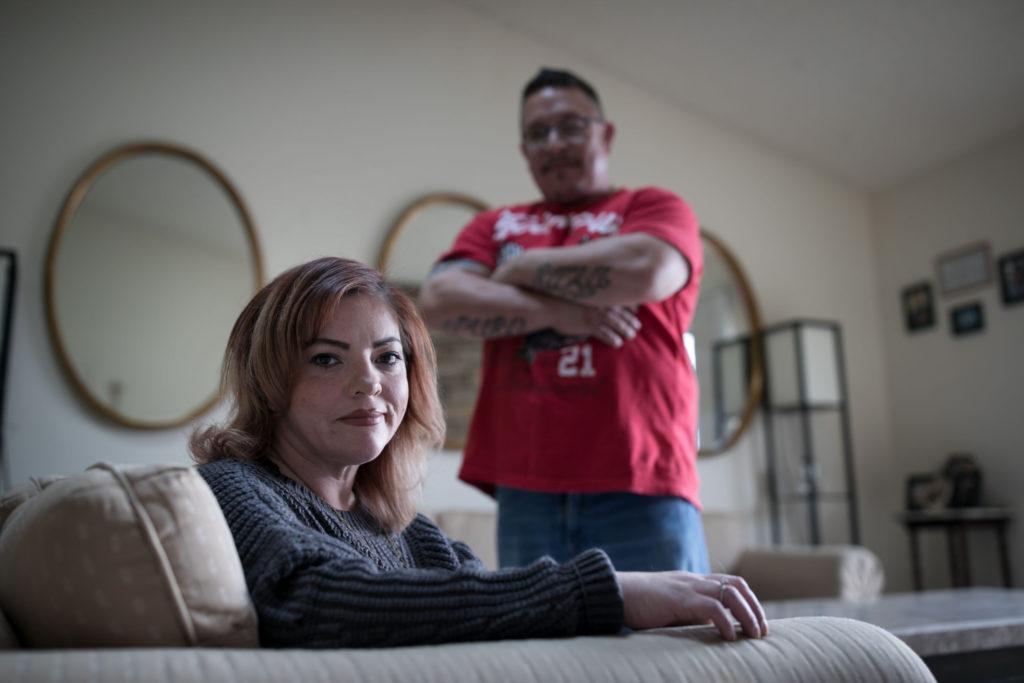
LaSalle, in Weld County, has just 2,346 residents, but its officers have shot four people in the six years examined. Two of those were in 2019. The total gives the small town the highest officer-involved shooting rate in the state. But there is an asterisk: In three of those four cases, Lasalle officers were providing aid to neighboring police agencies and didn’t initiate the activity that led to a shooting. LaSalle Chief Carl Harvey did not return a request for comment from CPR.
Colorado Attorney General Phil Weiser said the disparity among officer-involved shooting rates between police departments may point to the need to better standardization of training throughout the state — something he committed to after a controversial shooting of a teenager last summer in Colorado Springs.
“I think most law enforcement officers that I’ve talked to about this would say we need to be willing to look at how we’re doing things and learn from mistakes and do better,” Weiser said.
Broad Statutes, Gray Areas
When a sworn officer shoots someone, an investigation is typically conducted by a neighboring law enforcement agency. But CPR found those reviews are not always conducted the way a criminal investigation is usually pursued.
For example, officers are routinely allowed to leave the scene for hours or days before submitting to questions. In a 2017 shooting that involved the Pueblo Police Department, an officer was allowed to review his own bodycam footage before giving a statement to Pueblo sheriff’s deputies.
Those courtesies are rarely, if ever, extended to civilians under investigation.
“Any criminal and their attorneys would be overjoyed to have this opportunity to tailor their statements to the objective evidence,” said Cron, the attorney in Pueblo’s Byrd case.
Once complete, the investigation is then moved to the district attorney, who oversees prosecutions for the judicial district where the shooting occurred.
The DA’s review usually takes months — even more than a year in some cases. Officers are almost always back at work during this time. Sometimes they get new jobs in other agencies.
On rare occasions, a DA will ask a grand jury to review the case to decide whether a criminal charge is appropriate. But whether by grand jury or DA, just more than one-half of 1 percent of Colorado’s officer-involved shootings resulted in charges against the officer in the six-year period examined.
That’s because, as is the case in every state, Colorado and federal laws give officers broad leeway to determine the level of force necessary to protect themselves and the public in an emergency situation.
“With DAs, by the time it gets to us, it’s an application of facts and law,” said Tom Raynes, head of the Colorado District Attorneys Council. “You see things that it bothers you when you see it on video, but when you start applying the facts to the law, you realize OK, that may be not what I liked, but that’s what the law says is the proper outcome here.”
This can lead to scenarios where prosecutors find shootings legally justified — as families and communities wonder whether they were avoidable.
Throughout Colorado, CPR News found a large range of justifications for shootings. DAs have legally justified shootings where officers returned fire after being shot at first, where they faced a gun pointed at them, where they merely saw a gun, and where they suspected there might be a gun and fired preemptively to protect themselves, only to discover later the person was unarmed.
They have also justified shootings where no weapon was involved, but officers felt their lives were endangered by cars, trucks or fists.
“I believe the district attorneys’ offices are largely abdicating their responsibility to fairly look at these shootings,” said Birk Baumgartner, a lawyer who represents families on police excessive force lawsuits. “They are in effect giving police officers cover for these shootings, condoning these shootings. They’re not looking at them fairly.”
The law is so vague — and broad — that cases that share similar elements in court documents can be handled very differently.
For example, a Fort Lupton police officer is awaiting trial for manslaughter after he was indicted by a grand jury for shooting an unarmed suicidal man who charged at him, demanding that he be shot. In the same county, a LaSalle officer was cleared by a different grand jury after firing on an unarmed suspect who charged at her “aggressively,” according to the grand jury report, and did not show his hands or follow her commands, but never touched her.
The vast gray area between justified and avoidable has cost Colorado taxpayers and municipal insurers at least $20 million since 2012 in civil settlements in following shootings that were ruled justified under criminal law, CPR found.
Some of those settlements were won by Denver attorney David Lane, who has developed a deep mistrust of Colorado’s system for investigating officer-involved shootings. He believes the culture of law enforcement precludes truly independent investigations when a neighboring department gathers the evidence and the local district attorney makes the determination.
“They lie, okay?” Lane insists. “DAs and these investigative bodies are there to exonerate cops. That's what they do. That's their mission. They accomplish their mission.”
Lane would like to see a statewide independent agency take responsibility for investigating officer-involved shootings.
Some district attorneys think that’s unnecessary, and would deprive voters of control over the process. They argue that their role is limited to determining whether the officer committed a crime and could be convicted by a jury.
“I strongly believe the local district attorney should be responsible for the decision,” said Boulder District Attorney Michael Dougherty, who has on occasion asked grand juries to decide whether charges should be filed in some officer-involved shooting cases. “We should be answerable to the community and responsible to the voters so that if we don’t get this right, the community can let us know and the voters can take action.”
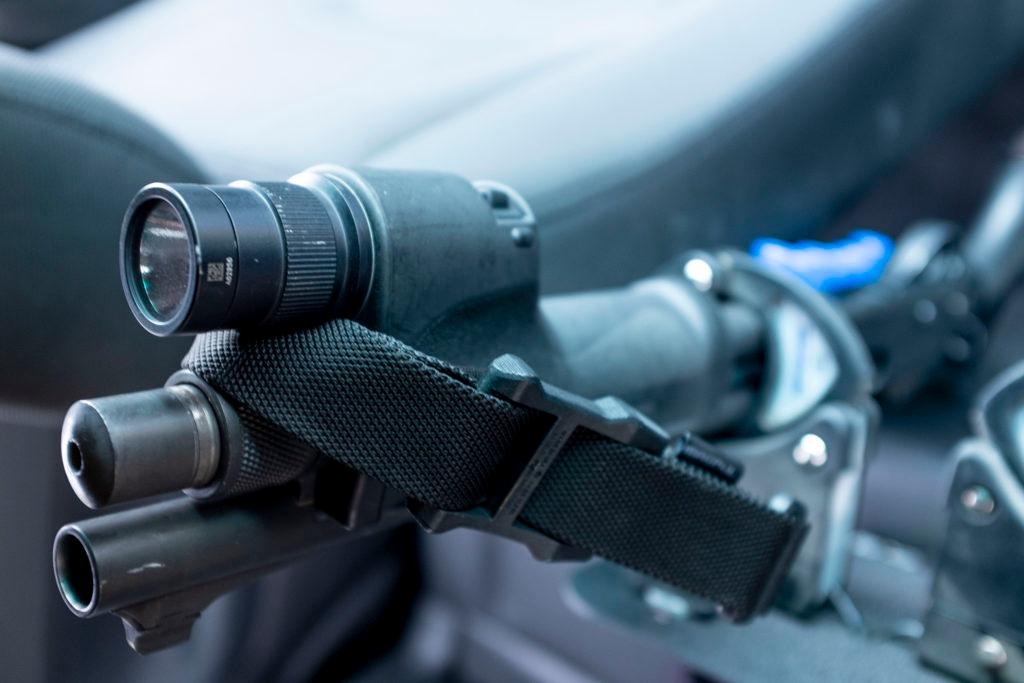
The only Colorado case in more than 20 years that firmly established a line between justified and criminal came in 2016 when a jury convicted a Rocky Ford officer of second-degree murder after he followed an innocent man into his home and shot him in the back. James Ashby was sentenced to 16 years in prison. The victim’s family received a $1.3 million settlement in the case.
“When you’re talking about officer-involved shootings, fundamentally, the goal of all of us, whether its legislators, law enforcement, we should be trying to instill confidence in the system for the public,” said Raynes, of the Colorado DA’s Council. “That comes through the integrity and transparency of the system, of the investigation and the application of the law and the facts.”
Few Fleeing Felons
Nineteen-year-old De’Von Bailey was a suspect in an armed robbery when Colorado Springs Sgt. Alan Van’t Land and Officer Blake Evenson pulled up behind Bailey and a friend on a residential street last summer.
Van’t Land, told by dispatchers that one of the suspects was likely armed with a handgun, asked the teenager to keep his hands up. As Evenson approached Bailey from behind, bodycam footage shows him look sideways and then take off into a neighborhood.
Van’t Land and Evenson drew their weapons and started chasing him.
“Hands up! Hands up!”
“Let me see your hands!”
Both officers then shot, hitting Bailey in the back.
The shooting was justified by a grand jury under Colorado’s “fleeing felon” statute. Similar to other states, it allows officers to shoot someone fleeing from police who is suspected of committing a felony with a deadly weapon. The idea is to prevent an armed, running and dangerous person from becoming a threat to the community.
CPR News found only 4 percent — or 13 shootings — over six years across Colorado were primarily justified under the state’s fleeing felon law — fewer than three per year.
Despite that relatively low number, however, some lawmakers including state Rep. Leslie Herod want to reform it.
“Obviously there are circumstances that come up and officers are placed in danger and shooting is necessary,” said Herod, who represents Denver. “But we need to make sure that that situation is as narrow as possible. Real people are losing their lives in these circumstances and we need to be very judicious about when we think deadly force is necessary.”
Even Arapahoe County District Attorney George Brauchler said the state’s fleeing felon law is worthy of exploration.
“It bugs me if they’re not armed or they aren’t posing an immediate risk,” Brauchler said. “I’d like to have conversations with both police and sheriffs … to figure out if there is some protocol or policy we should implement.”
Race And Ethnicity
The death of Bailey, who was black, sparked conversations across the state about whether African Americans are more subject to officers using deadly force than whites.
CPR News found that 48 percent of those shot by police in Colorado over six years were white, 11 percent were black and 36 percent were Latino. Other races, including Native Americans, account for the remainder. Colorado’s population is 68 percent white, 4 percent black and 22 percent Latino.
Those people of color shot by police are overrepresented compared to the state’s population — but not compared to those already inside the criminal justice system. The racial breakdown among inmates in the state Department of Corrections is 46 percent white, 18 percent black and 32 percent Hispanic.
No federal clearinghouse keeps detailed statistics on officer-involved shootings. The Washington Post has maintained the most comprehensive list, which was used to calculate Colorado’s national ranking.
That database shows that nationally, whites make up 50 percent of officer-involved shooting fatalities and 60 percent of the population. African-Americans are 27 percent of fatalities in police shootings nationally, more than two times their 12 percent of the population. Latinos are 19 percent of fatal police shootings nationally, just above their 18 percent representation in the population.
“People are afraid. People of color, homeless people, low-income people are afraid when they interact with law enforcement,” Herod said. “If we don't address that head-on, it's not going to get any better.”
Elisabeth Epps, the founder of Colorado’s Freedom Fund and prominent criminal justice reform activist who has worked on excessive force policies with police departments, said the higher than normal rates aren’t surprising.
“I want there to be no police shootings,” she said. “A win isn’t if the racial disparity evens out. I don’t want less black folks shot for more white folks to be shot. We need new ways to respond to things.”
Training And Policy Make A Difference
Five years ago, Denver Police officers responded to a Park Hill address on reports of a suspicious car in an alley.
Jessica Hernandez, 17, was slowly driving the stolen vehicle with her friends when cops tried to get her to stop, chasing her down on foot with guns drawn.
Hernandez didn’t heed the officers’ orders. She drove slowly towards them. The officers, perceiving her car to be a threat, shot and killed her.
Her death resulted in a near $1 million settlement agreement for her family and lawyers and a policy change for Denver Police: Officers are not allowed to shoot into cars unless someone fires at them first.
“A car is a two-ton deadly weapon and a 9 millimeter round is not going to stop a vehicle in its tracks,” said Denver Police Chief Paul Pazen. “That’s why we made that strong policy statement.”
Since then, officers routinely let people go if they drive off in suspicious vehicles.
Chuck Wexler calls this adjusting for the “proportionality” of the alleged crime.
“What we’re really talking about is the sanctity of human life and proportionality. Is it really right to kill someone over a stolen car? The answer is, of course, no,” said Wexler, a former Boston cop who is now a renowned international police and training expert at the Police Executive Research Forum. “You take the life of a … kid who is in a stolen car and you kill him and you go to the parents and try to explain to them that their kid is dead?”
De-escalation Saves Lives
Colorado’s picturesque 6th Judicial District is in the southwestern corner of the state and includes La Plata County and Durango.
Officers in this three-county area haven’t shot a single person in six years.
The man leading the Durango Police Department, Chief Bob Brammer, was commended for restraint in policing 18 years ago during a near-hostage situation where he eventually talked a guy into throwing his gun into the mud after a confrontation near a grocery store parking lot.
Brammer said he attributes his agency’s culture to pricey de-escalation training his officers conduct every year with actors they hire from Albuquerque who pretend to be in various kinds of crises.
“Life is precious and we try and preserve that as best we can. I know our officers are having confrontations on the street and they do draw their duty weapons on occasion,” Brammer said. “But based on their training and experience and relative pause of the situation, they’re able to de-escalate situations so they don’t have to resort to deadly force.”
Editor’s Note: This is part one of a four-part series on Colorado’s officer-involved shootings.
The total number of statewide officer-involved shootings and suspect fatalities for the six-year period have been updated in this story. Following initial publication, officials at the Mesa County District Attorney's Office realized they had previously failed to release an investigative "decision letter" after determining a fatal 2016 shooting in Grand Junction was justified. Charts accompanying the story have also been updated.



